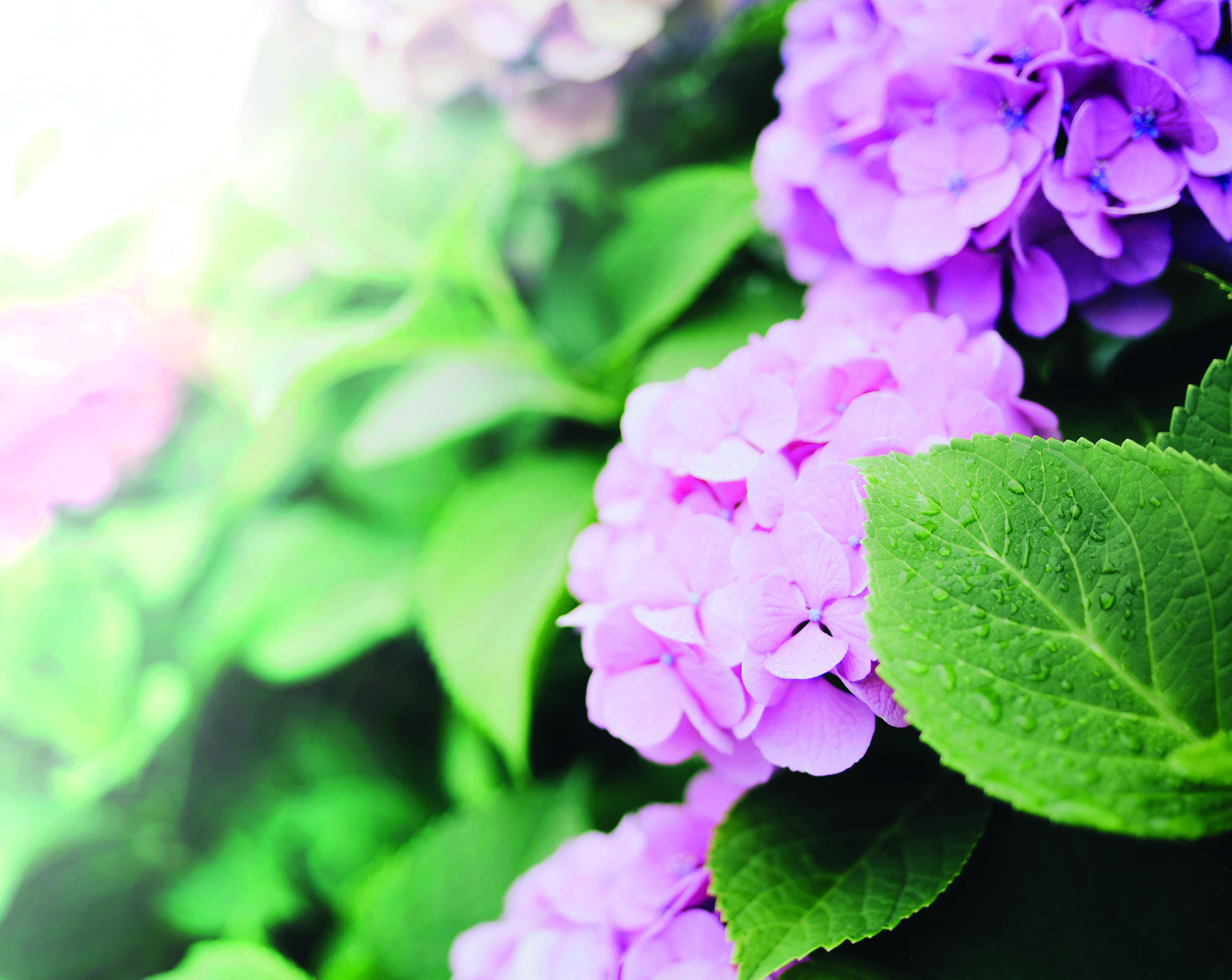
Hydrangeas are gorgeous shrubs – their large blousy heads create abundance and colour into late summer, often taking on pinky hues in autumn, with dried seed heads adding winter structure too.
They can be broadly categorised into two species, including Asian (paniculataand macrophylla) that prefer acid soil, some shade and moisture. For sunnier spots, opt for an American species such as the popular North American H. arborescens‘Annabelle’, which can handle full sun and less water.
Hydrangeas come in a vast range of colours, sizes and forms – from the globular mopheads to lacecaps with flatter heads of flowers. Here are a few to consider:
Hydrangea Macrophylla
If the standard pink and blue mopheads (pink in alkaline and blue in acidic soil), conjure up an old fashioned image, opt for classic white varieties such as the flamboyant H. macrophylla ‘Madame Emile Mouillere’ or H. macrophylla ‘Zebra’ which has striking black stems. Otherwise, go for dramatic colours such as H. macrophylla ‘Westfalen’ with its large rich purple mophead blooms.Lovely lacecaps include subtle grey blue and white H. macrophylla ‘Veitchii’, or richly coloured ‘Rotchwanz’with deep pink to wine-colored starry flowers.
Hydrangea paniculata
Hydrangea paniculata have long conical shaped flowers and add colour later in the season. Loose in habit,H. paniculata ‘Vanille Fraise’ haslarge creamy white flower heads turning shades of pale pink as they age. ‘Pinky Winky’ is a slightly darker pink variety pointier flower heads.For more drama H. paniculata‘Wim’s Red’has scented flowers that start white and end up a rich red and‘Limelight’ is a popular hydrangea with heads of lime-green flower. For smaller gardens, H. paniculata ‘Little Lime’, is a compact version, while ‘Kyushu’has conicles of white flowers and a neat upright habit.
Hydrangea arborescens
Best loved is H. arborescens ‘Annabelle’ with huge globes of fresh lacy cream-coloured flowers. A new variety ‘Strong Annabelle’ has tougher stems.And now breeding has lead to varieties of H. arborescens in shades of pink including H. arborescens ‘Invincible Spirit,’ and the paler pink ‘Sweet Annabelle’ with flowers that soften to a delicious paler pink as the flowers fully open.
Hydrangea H. Quercifolia
These are as much about the large lobed leaves that turn a dramatic pinky red, as flowers. ‘Snow Queen’ has large cones of white flowers and a spreading habit– perfect for woodland areas. ‘Snowflake’, hasconical heads of delicate double white flowers in summer with fiery autumnal foliage colour.
Hydrangea care
Most hydrangeas like a sheltered position out of the wind, some shade and moisture – even H. arborescens such as‘Annabelle’. Add plenty of organic material such as garden compost, when planting – in the summer tip a bucket of water over the roots about once a week. Feed with a slow-release fertiliser or sprinkle blood, fish and bone in spring and early summer. If leaves are yellowing, water with liquid seaweed.
In spring cut back flowering stems to within a few buds of the woody framework, then mulch.
Staking with a fluted plant support in early spring will avoid them flopping – or bamboo canes tied gently to floppy steams will help keep plants upright.
Companions
Dark dramatic purples and plums such as penstemon ‘Raven’ or Clematis ‘Black Prince’ contrast well with white hydrangea varieties. Or go for spire shaped perennials such as Veronicastrum virginicum ‘Album’, or perovskia ‘Blue Spire’. Underplant with Liriope muscari, Vinca minor or Geranium ‘Rozanne’.
This article first appeared in the August 2019 issue of SE22 magazine.

